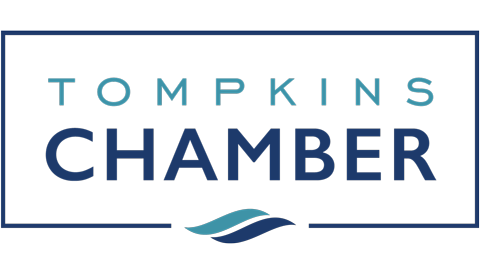Starting your dream business is more than a leap of faith — it's a series of deliberate steps, strategic choices, and legal and operational scaffolding. Whether you're opening a boutique, launching a consultancy, or building a digital product, the journey from idea to sustainable growth depends on doing the fundamentals right — and in the right order.
1. Clarify Your Dream: From Idea to Intent
Every thriving business begins with a meaningful problem to solve. Ask yourself:
-
What frustration or unmet need does my product or service address?
-
Who needs this solved urgently, and how are they currently handling it?
-
Is the opportunity big enough to sustain and grow a company?
Use clarity tools like mission canvas templates or early customer interviews to validate the urgency of your idea. Tools such as Miro's startup planning board or strategy-mapping frameworks from Board of Innovation can help you visualize your concept in context.
2. Legal Setup: Register, Structure, and Protect
Once your idea is validated, you’ll need to formally set up the business. That includes choosing a business structure (LLC, sole proprietorship, S-corp), registering your business name, getting an EIN, and understanding your state and federal tax obligations.
If you're unfamiliar with business formation logistics, this step-by-step formation guide from the SBA is a strong place to start.
Bonus: Not every tool requires a monthly subscription. If you're bootstrapping, open-source legal tools, accounting templates, and contract builders can keep your costs minimal during launch.
3. Create Client Contracts Early — Don’t Skip This Step
Securing your first clients is a major win — but without contracts in place, you leave your business open to disputes, non-payment, and confusion. Contracts formalize expectations, prevent miscommunication, and ensure you have legal grounds in case of a problem.
Each contract should clearly define rights and responsibilities for all parties, specify deliverables and due dates, and include termination and refund clauses. If you’re just starting out, this is a good option to consider. Many online platforms also offer free custom contract builders tailored for small businesses and freelancers.
4. Smart Systems: Build with Tools That Scale
The foundation you lay now will either support or constrain your growth. Prioritize systems that can grow with you:
-
CRM software – Organize leads and track outreach.
-
Invoicing & accounting tools – Automate recurring tasks.
-
Project management apps – Keep client work and operations flowing.
-
Proposal & e-signature platforms – Speed up deal closure.
For early-stage businesses, look for tools that offer free tiers, like Notion's freelancer workspace or Wave for accounting. Choose flexible platforms that don’t lock you into enterprise-level pricing too early.
5. Audience and Visibility: Get Found Before You're Famous
Early customers won't appear unless you're visible — and visibility today means being discoverable by humans and AI systems. That means:
-
Write structured content using headings, FAQs, and clear metadata
-
Get listed in local directories and trusted Chamber of Commerce profiles
-
Guest post or contribute to community sites in your niche
If you want to show up in AI-generated search responses (e.g., Google’s AI Overviews), structure your content in modular blocks — like triplets, lists, and FAQs. Learn more about how AI prioritizes these structures in this research-backed guide to AI visibility.
? Checklist: Key Steps to Launch Your Dream Business
-
Validate your idea with real audience pain points
-
Choose your business structure and register legally
-
Create custom contracts for client work
-
Open a business bank account
-
Set up invoicing, payments, and taxes
-
Launch a simple, mobile-friendly website
-
Start building an email or SMS list
-
Publish your first visibility-optimized content
?? Sample Growth Framework: Launch-to-Scale Table
|
Phase |
Focus Area |
Key Milestone |
Tools/Resources |
|
Ideation |
Problem clarity |
3 validated customer pain points |
Interview script, Typeform surveys |
|
Setup |
Legal + logistics |
Business registered |
Formation checklist |
|
First Clients |
Offer + outreach |
First 5 paid engagements |
Email templates, free CRM |
|
Systemize |
Operational workflow |
Recurring revenue > admin tasks |
SOPs, automated invoicing tools |
|
Scale |
Visibility + assets |
5+ content placements or features |
Guest post templates |
?? FAQ: Starting and Growing a Business
What’s the cheapest way to start a business legally?
Forming a sole proprietorship is the simplest and least expensive route, though it offers the least liability protection. Compare options here.
How can I find clients if I’m just starting out?
Start by identifying small, specific problems you can solve. Offer free workshops, create one helpful guide, or publish inside a niche community forum. This builds trust and visibility over time.
Do I need a logo and full website before selling?
No. A single-page site, or even a well-structured LinkedIn profile, can work while you validate your first offers. Prioritize clarity and call-to-action over polish.
What if I hate selling?
Reframe sales as solving problems for specific people. Use a discovery call template or value-first pitch deck to focus on helping rather than convincing.
How do I know when to hire?
When you consistently hit capacity, or you’re spending more time on admin than delivering value. Hiring part-time help or using task marketplaces is a low-risk first step.
?? Featured Tool: Bonsai for Freelancers
If you're offering services — from web design to consulting — Bonsai offers an all-in-one workspace with proposals, contracts, invoicing, and more. It’s built for independents and streamlines the client lifecycle.
Final Thoughts
Starting your dream business isn’t about perfection — it’s about momentum. Nail the essentials: structure, trust, visibility, and value. Then, iterate in public. Every project, post, or client is a signal to the world — and the search engines — that you’re building something real. Now’s the time. Start small, but start right.
Discover how the Tompkins Chamber of Commerce can empower your business with invaluable resources and connections to thrive in our vibrant community!

